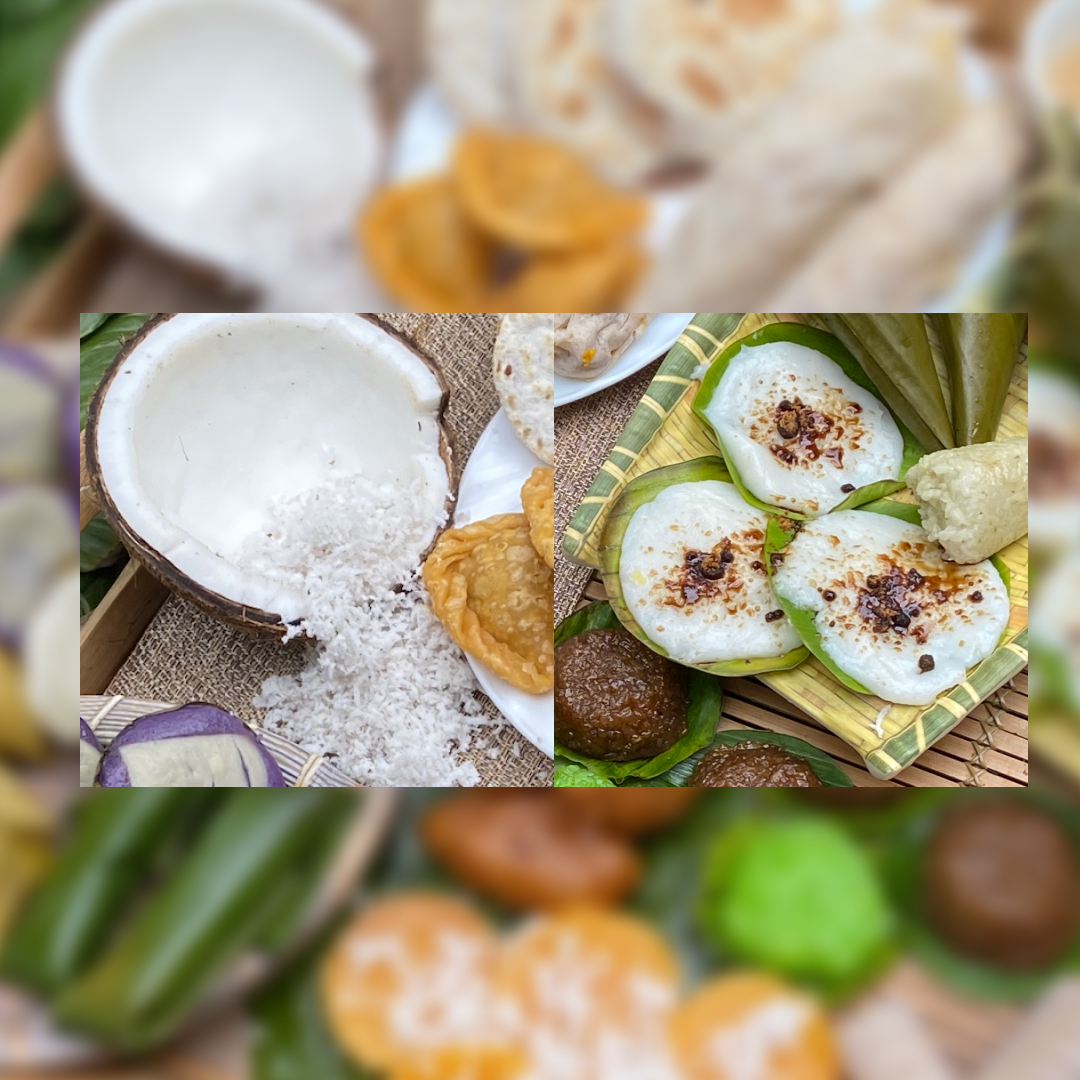
Piaya is a baked flatbread stuffed with muscovado sugar. Panara is a deep-fried turnover pastry filled with mung bean sprouts and vegetables. Lumpia Ubod is a Filipino version of a spring roll with shredded coconut palm hearts as its main ingredient mixed with ground meat and tossed in a special sauce.
Since the dawn of civilization, street vending has been around not only as a means of livelihood but also as a defining point of a specific region’s culture. In our native Hiligaynon, the act of selling goods on foot is called paglibod, and those who do this are affectionately referred to as manuglibod. Tightly knitted to Negrense food and culture, though noticeably fewer, they are still found in most corners of the Negros region.
In the romantic city of Silay here in Negros Occidental, this form of trade is barely survived by manuglibods who pass on the generational torch, as well as the few who happen to stumble upon it as a profession. This leads us further to wonder, how much longer will we see them around?

Ibus is glutinous rice cooked in coconut milk and wrapped in coconut leaves. Puto is a steamed rice cake that comes in different varieties like ube, cheese, and good old regular. Kalamay Hati is a native dessert made with ground glutinous rice, coconut milk, and muscovado sugar commonly wrapped in banana leaves.
Our curiosity led us straight to the heartwarming story of Maricar.
A manuglibod in Silay City since 2009, Maricar recalls the instances that led her to this life’s calling. Having just given birth to her second child and struggling to make ends meet, she ventured aimlessly through the city, searching for work with the hopes of aiding her husband with their needs. With limited opportunities for anything sustainable, Maricar turned to food and paglibod for refuge. Sitting in a corner, she was brought to the realization that the contents of her basket would matter only as much as where she sells it. With this in mind, she familiarized herself more with the myriads of local delicacies that Negrense cuisine offers. Little did she know that this endeavor would soon serve as her ticket to finding her niche in the community.

Kutsinta is a steamed rice cake made with rice/tapioca flour, lye water, and brown sugar infused with annatto coloring that gives it its orange appearance. Suman is a sweet native snack which is glutinous rice with minced ginger cooked in coconut milk with brown sugar. It comes in different varieties, like pandan and ube.
The enormity of seeing this venture through proved to be quite the challenge. It meant getting up every day no later than five in the morning to start her routine of making breakfast, preparing her children for school, and getting herself ready to travel to the market. Once there, she fills her basket with assorted native delicacies from the local retailers. However, the real test was taking her business out to the streets without knowing how accepting people would be, both of her and her products.
Maricar recalls meeting her first customer. Upon opening her basket, the lady asked on cue if Maricar’s food was any good. That instant, all of Maricar’s worries faded and turned into a sales pitch straight from the heart, assuring the customer that everything was made with love. From then on, Maricar knew she was born to do this.

“Inday” is a Hiligaynon term of endearment for a beloved daughter or sister. Inday-inday is a chewy poached rice flour treat that is taken with either muscovado sugar, or topped with coconut shreds and muscovado sugar.
The origins of the manuglibod parallel that of Maricar in more ways than one. Former Silay Tourism Officer Ver Pacete recounted that it all started back in the mid-1800s when hacenderos were lulled into the temptations of gambling, much to the chagrin of their wives. Like Maricar, the women in the family were guided by food through hard times. Finding a silver lining, they decided to cook native treats and sell these to their husbands, who were too preoccupied to leave the betting tables. They introduced numerous beloved kakanins, such as Suman, But-ong, and Baye Baye, to name a few, which they soon began selling in the streets arranged in their native baskets. These women would become the first generation of manuglibods in Silay. Avid patrons, fondly called suki in the vernacular, routinely await their arrival. Their number grew as recipes were passed along, and more people turned to paglibod for livelihood. They have since kept up with changes, as did their products. Although their menu has evolved along with their customers’ demands, the classic Negrense kakanins remain the star of the show.

Baye-Baye is a kakanin made by combining ground toasted pinipig, young coconut meat, coconut water, and sugar and is known for its distinct chewy texture.
Much like what happened to other manuglibods, patronizing products from local merchants in the market to peddle has its advantages for Maricar. Buying from different vendors unlocked a network of new customers and tricks to the trade. She handpicked the Silay City Hall as her regular spot, and to this day, she sells out daily. Her patrons have become family to her, while their business has supported Maricar’s own, paying for her children’s education and their home improvements.
After 13 years of paglibod, Maricar now understands that there are no set paradigms to a manuglibod’s life. She flashes back to a stormy day where she carried on with her routine against her judgment, doubtful if anyone else was doing the same. To her surprise, sheltered under City Hall were dozens of people all waiting to be fed. She sold out in minutes and spent the rest of her work day sharing stories with the people stranded in the rain with her. Indeed, every trial births an equal opportunity. This was especially true with the unforeseen length of the Covid-19 pandemic, which caused her to miss months' worth of income due to strict lockdowns. Being the optimist that she is, Maricar and her husband spent time doing repairs on their home to save on labor costs. Thankfully, things have started to open up, and Maricar’s business seems to have found its footing once more.

But-ong is a sticky rice snack, much like Ibus but conical in shape, wrapped in banana leaves, and usually paired with brown sugar.
However, reality bites as manuglibods have become sort of a novelty nowadays. Hungry? Swipe through a plethora of restaurants on your phone, pick out what you fancy, and wait for your delivery. It’s that basic – the new basic. But remember the good old days when you used to run down the street with coins jingling in your pocket? Can you still feel the warmth from that cup of taho in the morning? Do you still recall that frozen grin while waiting for your “dirty” ice cream? Do these still ring any bells?
Woven deeply into our culture, the dwindling number of manuglibods reflect the current state of our society. The more we tighten our belts, the less we see them around. And when they finally cease to exist, so will the workers who gallantly strive to make these culinary treasures the traditional way. Imagine how hard it would be then to find authentic versions of our favorite native snacks. The thought of an end to this part of Negrense culture is unnerving.

Bitso-Bitso is a crunchy deep-fried sticky rice treat dipped in caramelized muscovado sugar then sprinkled with sesame seeds. It is known to have a lingering coconut aftertaste.
Despite realizing that she is part of a dying breed, Maricar still hopes to go the distance as a manuglibod. She joyfully tells us that she will keep on doing this until the day that she can no more. She hasn’t lost hope and believes the only way to keep the tradition going is by paying it forward. In her case, Maricar passed down some native recipes that she learned along the way to three of her suki, one of whom has now become a manuglibod.
Text by: Mayumi Espina
Photos and Video by: Bakunawa Films









